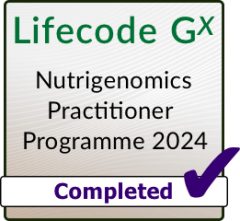Reference Number: 419
Year: 2013
Link: Link to original paper
Nutrition: Wheat dextrin | Whole grain
Inclusions: Garlic | Wheat (whole)
Summary
This study investigated the fermentation and microbiota profiles of three fibers, wheat dextrin (WD), partially hydrolyzed guar gum (PHGG), and inulin, since little is known about the effects of WD and PHGG on gut microbiota. A treatment of salivary amylase, pepsin, and pancreatin was used to better physiologic digestion. Fibers (0.5 g) were fermented in triplicate including a control group without fiber for 0, 4, 8, 12, and 24 h. Analysis of pH, gas volume, hydrogen and methane gases, and short chain fatty acid (SCFA) concentrations were completed at each time point. Quantitative polymerase chain reaction (qPCR) was used to measure Bifidobacteria and Lactobacillus CFUs at 24 h. WD produced the least gas during fermentation at 8, 12, and 24 h (P < 0.0001), while inulin produced the most by 8 h (P < 0.0001). Each fiber reached its lowest pH value at different time points with inulin at 8 h (mean ±SE) (5.94 ±0.03), PHGG at 12 h (5.98 ±0.01), and
WD at 24 h (6.17 ±0.03). All fibers had higher total SCFA concentrations compared to the negative control (P < 0.05) at 24 h. At 24 h, inulin produced significantly (P = 0.0016) more butyrate than WD with PHGG being similar to both. An exploratory microbial analysis (log10 CFU/µL) showed WD had CFU for Bifidobacteria (6.12) and Lactobacillus (7.15) compared with the control (4.92 and 6.35, respectively). Rate of gas production is influenced by fiber source and may affect tolerance in vivo. Exploratory microbiota data hint at high levels of Bifidobacteria for WD, but require more robust investigation to corroborate these findings.
Significance of this study: This study shows that the fermentation of wheat raises the levels of key beneficial gut microbes, Bifidobacterium and Lactobacillus and subsequently increasing the levels of short chain fatty acid (SCFA) concentrations. This study also measures inulin and tells us that we can boost these benefits if we add inulin rich foods such as the onions, garlic, leaks, dandelions into our bakes. For example, we integrate onions in our Sourdough Cheese Onion Pan Loaf recipe.

